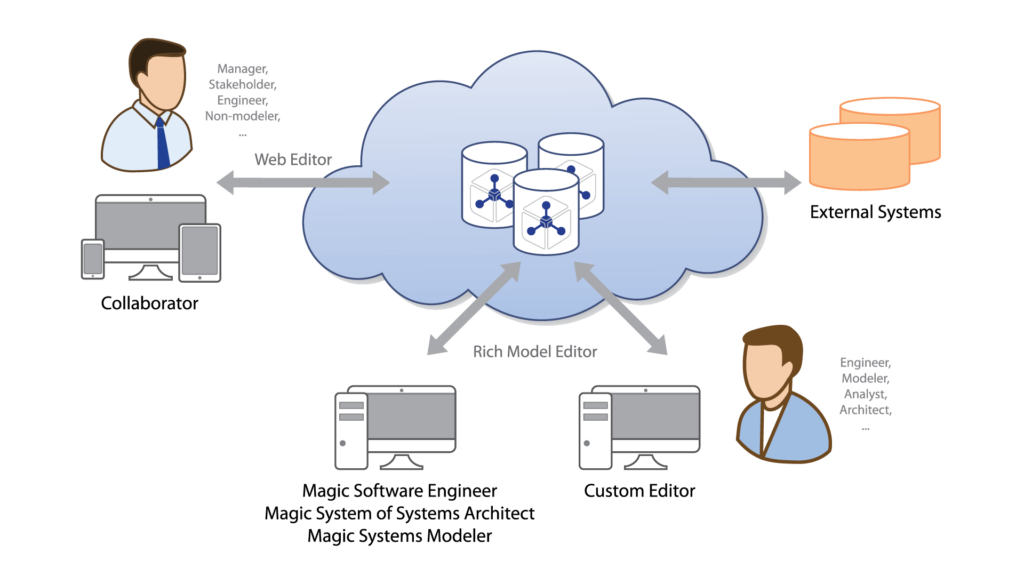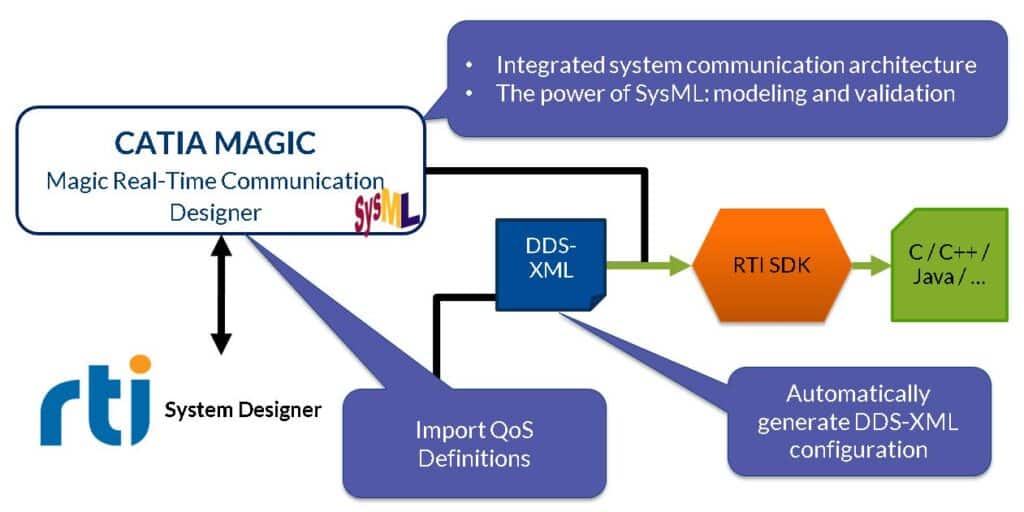Key Benefits
Improve Communication
Improved communication among stakeholders
Manage Complexity
Increased ability to manage system complexity by enabling a system model to be viewed from multiple perspectives and to analyse the impact of changes
Improve Product Quality
Improved product quality by providing an unambiguous and precise model of the system that can be evaluated for consistency, correctness, and completeness.
Reduce time and costs
Enhanced knowledge capture and reuse of the information by capturing information in more standardized ways and leveraging built-in abstraction mechanisms inherent in model driven approaches. This in turn can result in reduced cycle time and lower maintenance costs to modify the design.
Improve Concept Clarity
Improved ability to teach and learn systems engineering by providing a clear and unambiguous representation of the concepts.
CATIA Magic Products
Collaborative software that uses SysML to manage complex systems. It provides tools for engineering analysis, verifying requirements, and tracking design progress. This product is ideal for cross-platform projects, and allows models to be stored remotely, saved as files, or published in different formats.

Software product that enables collaborative development and version model storage. It provides advanced model-governance, analysis, and integration with third-party tools. Users can work on models online or offline and track modifications on published architectures.

Software product that lets users code detailed, executable behaviour within a UML model using the Alf language. It includes a syntax-aware editor and a compiler for translating Alf code into fUML activity models, making behavioural specifications fully executable.

Software plugin that integrates SysML and DDS to create model-based systems based on real-time communication flow across embedded and distributed systems. It provides a common view of the system and integration with RTI Connext to enable graphical design and configuration of all DDS aspects, increasing productivity and providing a single source of truth.







